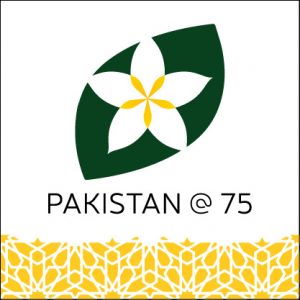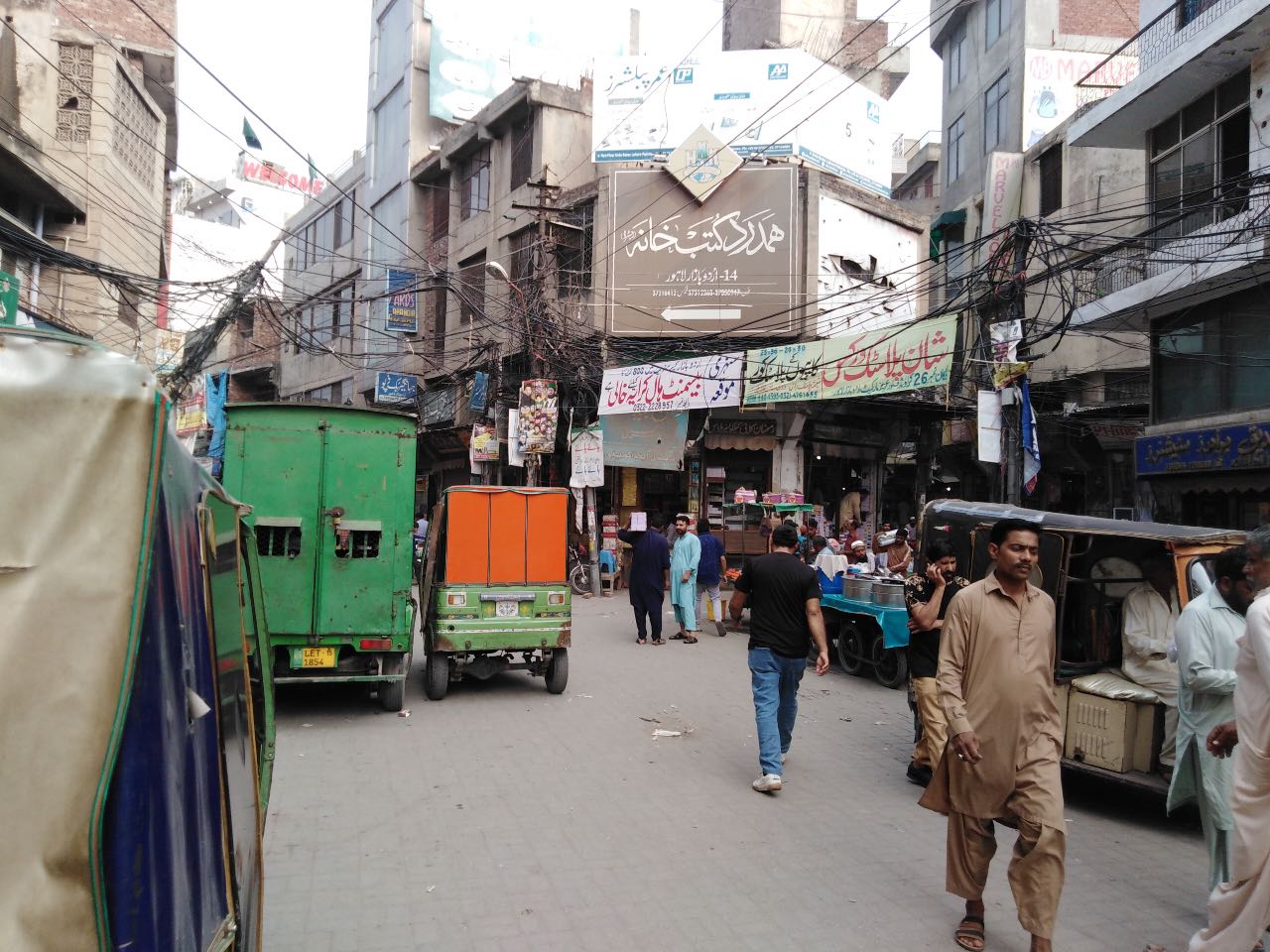 What is the status of human rights and civil liberties in Pakistan today? As the country celebrates 75 years, Farah Zia outlines its complex history of struggle and victories in a country whose complicated political trajectory over the past seven decades seems to distance it more and more from the vision of its Founding Father Quaid-i Azam Muhammad Ali Jinnah.
What is the status of human rights and civil liberties in Pakistan today? As the country celebrates 75 years, Farah Zia outlines its complex history of struggle and victories in a country whose complicated political trajectory over the past seven decades seems to distance it more and more from the vision of its Founding Father Quaid-i Azam Muhammad Ali Jinnah.
Seventy-five isn’t too old in country years. It is a milestone nonetheless, one that compels a stock-taking of sorts. For human rights and civil liberties in Pakistan, the last 75 years have been a constant struggle.
Time as a milestone is an interesting analogy. Some other analogies immediately come to mind. I recently met Baba Jan, a political activist from Gilgit-Baltistan, who had to spend 10 years in prison on charges of being anti-State and inciting people against the government; he was originally sentenced to 71 years (yes, you read that right). Exactly three years ago, Idris Khattak, a political and human rights activist was abducted, charged with espionage eight months later under the Official Secrets Act and sentenced to 14 years of rigorous imprisonment by a military court. A few months on and Junaid Hafeez, a university lecturer, will have completed 10 years behind bars, mostly in solitary confinement, on charges of blasphemy. He is now sentenced to death, awaiting his appeal to be heard in the High Court.
Back to Pakistan at 75, and its struggle for rights going back to pre-1947 when India and Pakistan were one country.
Our guru on civil rights and liberties, I. A. Rehman, reminded us how the Nehru Committee , headed by Motilal Nehru, constituted in 1928 to draft a Constitution for united India by the Indians, wrote a chapter on fundamental rights in its report, including freedom of expression, association, assembly, movement and nationality. For students of the history in Pakistan, the Nehru Report was rejected by the Muslim League because it denied Muslims the 33 per cent share in the central legislature they were asking for. For these students, Jinnah’s Fourteen Points — presented as an answer to the Nehru Report as an alternative political strategy for Muslims — are of far greater value.
That human rights were very much a part of the independence struggle is what our guru was actually trying to tell us.
Once the decision on the partition of the Indian subcontinent was taken, the dynamics and priorities changed for the Muslim leadership. One of the first things done by the Constituent Assembly in Pakistan was to set up two committees, one to decide the basic principles of the Constitution, the other for fundamental rights of citizens and matters related to minorities. Jinnah chaired the second committee himself. This was 12 August 1947, days before Jinnah was sworn in as Governor-General. A lot of ground was covered by the Rights Committee in Jinnah’s lifetime and, even though the draft Constitution was not completed till 1956, the Constituent Assembly had accepted the chapter on fundamental rights by 1950.
Even before this was Jinnah’s famous 11 August speech — ‘You are free to go to your temples, you are free to go to your mosques…’ — where he laid the foundations of equal citizenship in a secular polity that he envisaged for the new country. Later, Pakistan under its foreign minister Sir Zafarullah Khan became one of the 48 countries that voted in favour of the Universal Declaration of Human Rights at the United Nations in 1948.
*
But wait. A little bit more of history is in order — to understand why it has been a constant struggle for rights in this country.
Equal citizenship and secular polity remained contested subjects from Day One. Months after Jinnah’s death, in March 1949, the Constituent Assembly passed a motion titled ‘Aims and Objectives of the Constitution’, famously known as the ‘Objectives Resolution’, which was vehemently opposed by all minority members who voted against it. They did not approve of the amalgamation of religion and politics written into the Objectives Resolution — individuals have religions, states don’t, they warned — and feared it will turn Pakistan into a theocracy.
Uttering these prophetic words, the minority members who could leave, left the country over time. The promise of equal citizenship dwindled, a Constitution was formalised in 1956 and abrogated in 1958 when the first Martial Law was declared, a centralised state was preferred over a decentralised one, and another Constitution brought in, in 1962.
The 1962 Constitution was a rarity in that it ignored the concept of justiciable fundamental rights. The then president General Ayub Khan paid no heed to the recommendation of its own, selected Constitution Commission — to retain the fundamental rights as provided in the 1956 Constitution. Instead, he turned them into Principles of law-making alone. In an overly insecure and highly centralised state, eight political leaders (all from East Pakistan) made a public statement demanding these rights to be restored in the 1962 Constitution and be made justiciable instead of as Principles of law-making.
The rights were eventually restored to the Constitution in early1964, with three exceptions: these will not be applicable on the military/defence forces and those maintaining law and order (just as it was in the 1956 Constitution); all laws passed after the imposition of Martial Law would not be declared void if they are in conflict with fundamental rights; and that these rights will not apply to the tribal areas.
*
The burden of a centralised state — from One-Unit politics to military action in East Pakistan to curb Bengali nationalism — eventually led to the dismemberment of Pakistan in 1971, 24 years after independence. The ethno-linguistic nationalities in smaller provinces in what remains of Pakistan reel under the same burden, despite the passage of the Eighteenth Constitutional Amendment which guarantees provincial autonomy.
The doings of military rules have haunted the country but the struggle for rights is on. It was during Ayub Khan’s military dictatorship when, through an Ordinance, a new section was introduced (Sec. 2(1) (d)) to the Army Act 1952, which brought civilians within the scope of the Army Act for offences committed in relation to defence and security of Pakistan under the Official Secrets Act 1923. It is under this section that Idris Khattak was framed in 2019.
Today, everyone seems to rely on the chapter on fundamental rights in the 1973 Constitution as the ultimate handbook. Some of these rights are subject to ‘reasonable restrictions’ like ‘prejudicial to the integrity, security or defence of Pakistan’, ‘against public interest’, ‘prejudicial to sovereignty or integrity of Pakistan’, ‘glory of Islam’, ‘friendly relations with foreign states’, ‘public order, decency or morality’. The only absolute right in this chapter is about dignity of a person — one that the citizens are justified in finding as ‘absolutely’ ironic.
An oft-quoted phrase since its inception is how in Pakistan the rights given by one hand are then taken away by the other, referring to some provisions of the Constitution, laws and procedures that are used by state authorities to curb people’s rights. There is reference to colonial laws like the sedition law, laws against freedom of assembly, blasphemy laws, hate speech laws, Frontier Crimes Regulation (1901), etc. which were supplemented with post-colonial laws like the Prevention of Anti-National Activities Act, the Actions in Aid of Civil Power Regulations 2011, Prevention of Electronic Crimes Act, 2016, etc. Of the post-colonial laws, one which has been the broadest in scope in terms of its impact on fundamental rights is the Anti-Terrorism Act 1997.
*
The context of this brief primer on Pakistan’s constitutional history and laws is important if we want to understand what defines the struggle for rights in this country. In my view, three forces, or contradictions if you like — the military in ascendancy over civilian forces, majoritarian religion prevailing over a secular state, and a centralised state gaining power over federation — define the polity and state of rights.
Often, the ascendant forces have acted in tandem. For instance, the Anti-Terrorism courts have not sufficed for incidents of terrorism and military courts with their propensity for summary justice have been offered as a solution, with Constitutional amendments (21st Amendment, 2015 and 23rd Amendment, 2017) effected to put them in place (even if for four years). There are times when state authorities have not let the laws prevent them from acting against citizens whom they perceive as acting against ‘national interest’ or when they feel the laws are a hindrance, a liability, that take too long a time to bear any result. Enforced disappearances, extrajudicial killings and torture by state authorities are handy tools that have been used with impunity. Sometimes, when the noise against the forcibly disappeared becomes too loud, they are brought into the fold of law bearing charges of sedition, espionage and even blasphemy (the last charge was slapped in the case of five bloggers who ‘disappeared’ from Punjab in early 2017).
A state wearing religion on its sleeve has remained unkind to minorities, beginning with the passing of the Objectives Resolution mentioned earlier. The abuse of rights ranges from violence against religious minorities to minority sects to women to children to torture to abuses in the name of counter-terrorism. To list them all is not the intention here because any list will always leave some out.
*
Alongside the constitutional and legal battle for fundamental rights, which began early on, were women’s, students’ and labour movements since the 1950s and 1960s, albeit in silos. Add to these the fight for civil and political rights spearheaded by journalists and lawyers. Women protested under the Women’s Action Forum (WAF) against the discriminatory laws during Zia ul Haq’s draconian military rule.
However, when Martial Law was lifted in 1985, it opened up the possibility of a wider movement on human rights which consolidated all the individual struggles. That is when lawyers Asma Jahangir, Hina Jilani and a few like-minded people from amongst lawyers, retired judges, journalists and academics gathered to lay the foundation of a Human Rights Commission. They travelled across the length and breadth of the country to invite people to become members of this civil society-led Commission. In 1986, the Human Rights Commission of Pakistan (HRCP) started its work, which was ambitious to begin with: it aimed to keep a record of all human rights violations, ranging from civil and political to economic, social and cultural, conduct fact-finding missions, produce authentic reports, do advocacy and lobbying, synchronise the local human rights debate with the one happening on the international scene, remind the Pakistani government of its international obligations, push for a National Commission on human rights, and so on.
Thanks to HRCP and its thousands of volunteers across Pakistan, there is now a human rights edifice in place, including but not limited to a range of civil society organisations doing stellar work, a Ministry of Human Rights in the central government as well as in the provinces, parliamentary committees on human rights, a statutory National Commission on Human Rights, statutory commissions on women and children, and a commission of sorts on minorities.
Today, human rights get spoken about. Yet, not only is the country still far from Jinnah’s vision of equal citizenship in a secular state, one isn’t sure if it is even geared in that direction. Just by way of example, a unique though imperfect law for the protection of transgender persons was passed in 2018, with corresponding provincial legislations being in the process of being presented as bills when, in recent months, obscurantist forces unleashed their hate campaign against the law, making the community more vulnerable than before. On the flip side, there is more public debate on the issue.
Seventy-five years, and the struggle for rights is still on.
The views expressed here are those of the author and not those of the ‘South Asia @ LSE’ blog, the LSE South Asia Centre or the London School of Economics and Political Science.
Banner image © Markus Spiske, ‘Every Human has Rights’, 2021, Unsplash.
The ‘Pakistan @ 75’ logo is copyrighted by the LSE South Asia Centre, and may not be used by anyone for any purpose. It shows the national flower of Pakistan, Jasmine (Jasminum officinale), framed in a filigree design adapted from Islamic architecture. The logo has been designed by Oroon Das.







